When renovating a truck camper (or any camper) weight is key. Sure, wood and other classic materials are aesthetically pleasing, reassuring, and seem environmentally friendly. Yet, every extra pound means more gas consumed per mile. We would rather use that gas to travel long distances than to move heavy weights. That (and a lot of rot) is why we decided to replace all the wood in our camper with a fiberglass composite material. Not only is it lighter than plywood, it is also resistant to damp, mold, and fire. All good things! That means that we learned a lot about fiberglass, resins, and other lightweight materials.
Fiberglass 101
To be clear: fiberglass is a glass fiber, often flattened into mats or woven material cloth. By its self, it is just a highly itchy material, but when combined with a resin, it becomes a very tough material for its weight. That is why it is very common in boats, automobiles, aircraft, tubs, tanks, and some campers.
A resin is a liquid plastic. There are many types of resins available: for our purposes, we were considering marine grade resins such as polyester, vinyl-ester, and epoxy, resins. These are all considered compatible with the fiberglass composite material we are using.
Polyester Resin
A polyester resin resin with an unsaturated polyester backbone which is catalyzed with a peroxide. Relative to the other resins discussed, it has poor adhesion, water resistance, and is prone to shrinkage.
This is likely the resin that you will find most readily. Bondo, the resin brand found in Home Depot, is a polyester resin. For those working with wood, polyester resin is a problem because it does not stick to wood. Overall, it has a bad rap for pealing off or “delaminating” when exposed to water. According to one vendor, it is best suited to projects where weight is not a primary concern. I have also read that this is a material that should only be used in conjunction with fiberglass mat or cloth, as it is very brittle and weak on its own.
I also hear that polyester resin literally stinks.
Vinyl-ester Resin
Vinyl-ester resin is similar in make up to polyester but strengthened with epoxy molecules. It tends to be stronger, more flexible, less prone to prerelease or shrinkage than polyester. Polyester is small chain carbon whereas vinyl-ester is long chain carbon. This allows for vinyl-ester’s greater flexibility and hold. Yet, vinyl-esters pose a challenge, as they are more sensitive to mixing, handling, and atmospheric temperature and humidity. Under the wrong circumstances, vinyl-ester simply will not cure.
In terms of the hierarchy of cost, vinyl-ester tends to be more expensive than polyester but less expensive than epoxy. When pricing out options, I find vinyl-ester to be around 2/3 the cost of epoxy, if not less.
Epoxy
Epoxy is a resin that is cured with amine curing agents at room temperatures. Epoxies make excellent adhesives and composite materials. Epoxies boast the greatest bond strength, toughness, and waterproofing qualities of any of the resins. While vinyl-esters and polyesters cannot adhere to epoxies, epoxies can adhere to the “esters.”
Epoxy appears to be the favored material. Why are the other two in the running? Because they are much cheaper. Like any expensive material, you will find cheaper variants that are cut with solvents and other additives to make them cure slower, faster, or be more flexible. Yet, such cutting just doesn’t pay off well. It can lead to weaker bonds, blushing, and curing complications.
When purchasing an epoxy, it is important to be aware of your environment. Epoxies have an ideal temperature to be applied. Heat, cold, and moisture can effect cure times, strength, and quality. If you are working in a hot environment, it helps to epoxy early in the day in the shade. If that isn’t enough, there are hardeners that help counteract the heat as well as specialized tropical blends. In addition, the smaller the mixing vessel (say, a coffee can) the faster the cure time. By spreading out the mixed epoxy into a container like a roller pan, the heat that the epoxy generates can be dissipated and cure time extended. (In the wrong conditions, epoxy can generate so much heat that it bursts into flames.)
Using Resins
Epoxy can be mixed for different purposes. Of course there is epoxy for fiberglassing, but it can also be used for coating a surface or bonding materials. We intend to use Epoxy for all of these purposes. Whatever your use case may be, it is important to buy the epoxy that best serves it. Don’t buy an epoxy and then fiddle with the mixing ratios.
For this process, it is important to make sure that both surfaces are clean of paint, dust, oils, and other materials that will come between the resin and the materials being bonded.
Use a medium grit sandpaper along the surface where the resin will be applied. Scratches, dips and other slight irregularities allow the resin to better adhere to the material. Us a brush to remove the dust from the material. Remember that air tools, while able to suck up dust, can also draw moisture and oils that will complicate the resin process.
Coating Resin
Epoxy and other resins are often used to protect and seal materials such as wood against moisture and the environment. Epoxying a piece of wood not only seals it from rot inducing moisture but also cuts back expansion and other environmental variables. This is a popular tool when protecting structural wood on a boat against the elements.
It is valuable to coat with resin as the temperature is cooling. When the temperatures rise, substances will expand and can often release bubbles into curing resin. This results in an uneven effect. If you have a blow torch, you can free some of these bubbles by running the blow torch over the surface… I do not have a blow torch. More is the pity.
In our case, we will be sealing certain sections of our fiberglass composite when they aren’t being attached to anything else. Though, for us, that may have more to do with wanting to limit our exposure to the itchy fiberglass.
Fiberglassing Resin
The addition of fiberglass in the epoxy process can create extra strong, sealed surfaces as well as creating stand alone forms. When using fiberglass with epoxy, it is important to use the fiberglass cloth rather than the mat. Fiberglass mat relies on styrene found in polyester resins to break down the binder to fully coat the mat. Instead, a lightweight cloth should be sufficient. Heavier weight cloths tend to only weigh down the project with little additional strength.
Bonding Resin
Epoxy can also be very useful to bond two items together. In our renovation project, we used Gorilla Glue to bind together our fiberglass panels because resin would eat away at the internal insulation foam and Gorilla Glue’s foaming action is highly effective in binding the fiberglass composite. When the time comes to bind the composite to anodized aluminum, however, we are turning to resin.
When using epoxy to bind, it should be thicker than when simply coating or fiberglassing. Ideally, this is a two step process. First, apply a regular coat of resin to each material. This seals up the gaps so that the thicker resin will be used for it’s purpose and not be redirected into small gaps. There is no need for this layer in the cases of non-porous materials like the aluminum sheet.
Next, add the thickener agent to the remaining resin and apply a second coat to each material. Clamp the two pieces together to ensure a consistent bond while curing. Be careful to only clamp enough for a firm connection, over clamping can result in epoxy being forced out of the bond and resulting in a weak connection.
Binding Metal With Epoxy
Metal can be bound to wood and other materials by using resin, though this is not for structural purposes. Before applying the resin, make sure the metal is clean and bright. In our case, we are binding aluminum. Aluminum is tough because it oxidizes quickly. It is important to apply the resin to the aluminum shortly after cleaning it or else the aluminum will already start having bits of rust, invisible to the eye yet enough to interfere with the bonding process. Some aluminum sheets can be more adhesive after being scrubbed with steel wool. The anodized aluminum that we are using, however, is so hard that such treatment is pointless. Instead, we will wipe it down with rubbing alcohol.
Note: do not apply resin to stainless steal. Oxygen is an important part of what makes stainless steal resistant to corrosion.
Blushing
Blushing is the bane of the epoxy applier. It is most apparent as an slightly opaque waxy finish. It is more common in cheap epoxies and humid environments, but it is something to always keep in mind. Blushed epoxy with not stick to anything. So, before painting, varnishing, or applying any other topcoat, you will need to wash off the blush.
Fiberglass and Resin Resources
- System Three Epoxy Book
- Epoxy Resin Guide by Progressive Epoxy Polymers
- Epoxy Manual by Raka
- Epoxies, Vinylesters and Polyesters Explained – MAS Epoxies from James Town Distributors
Recommended vendors that I have encountered (I haven’t personally used any of it yet…)
Do you have any thoughts, opinions, or advice? Share in the comments!


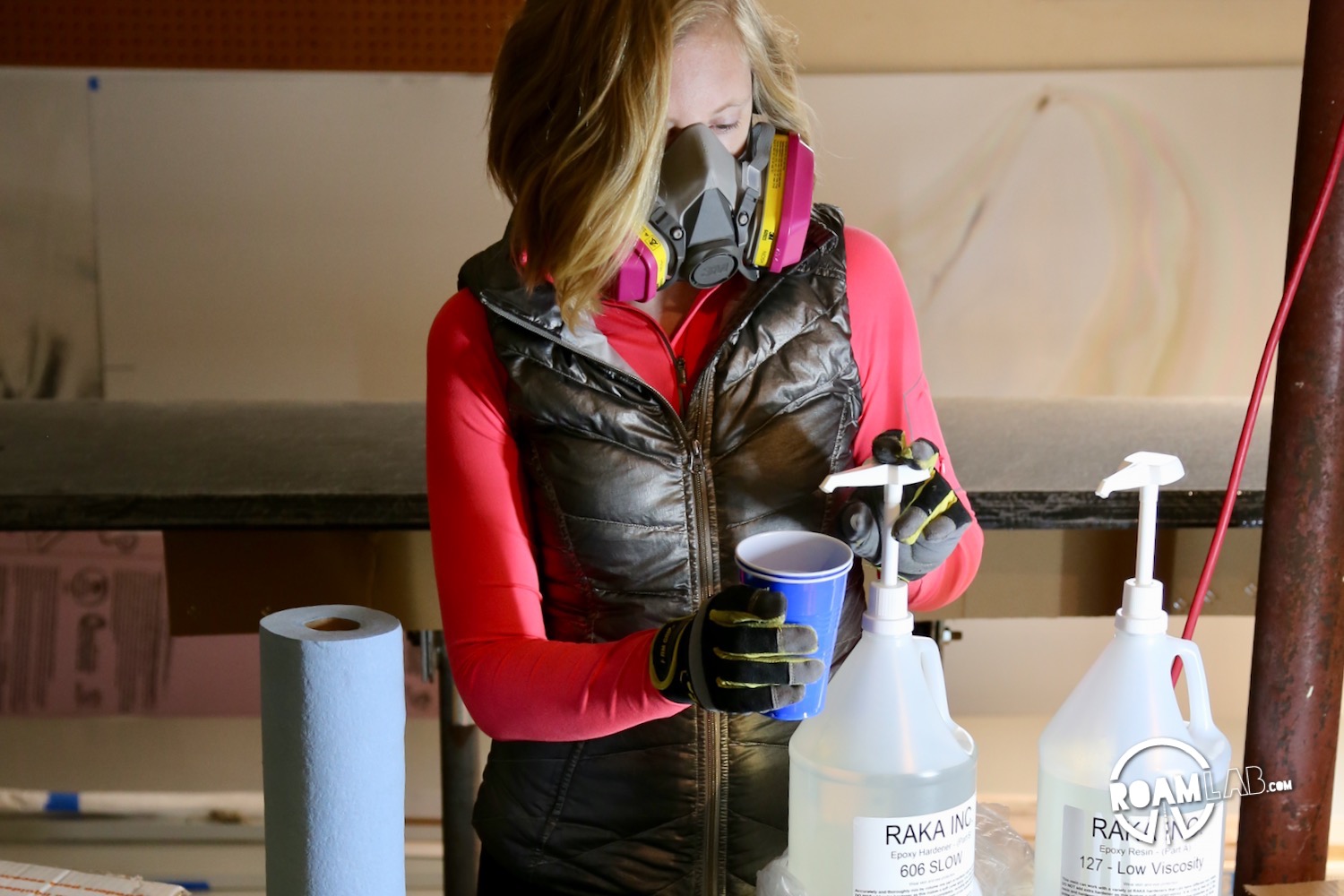
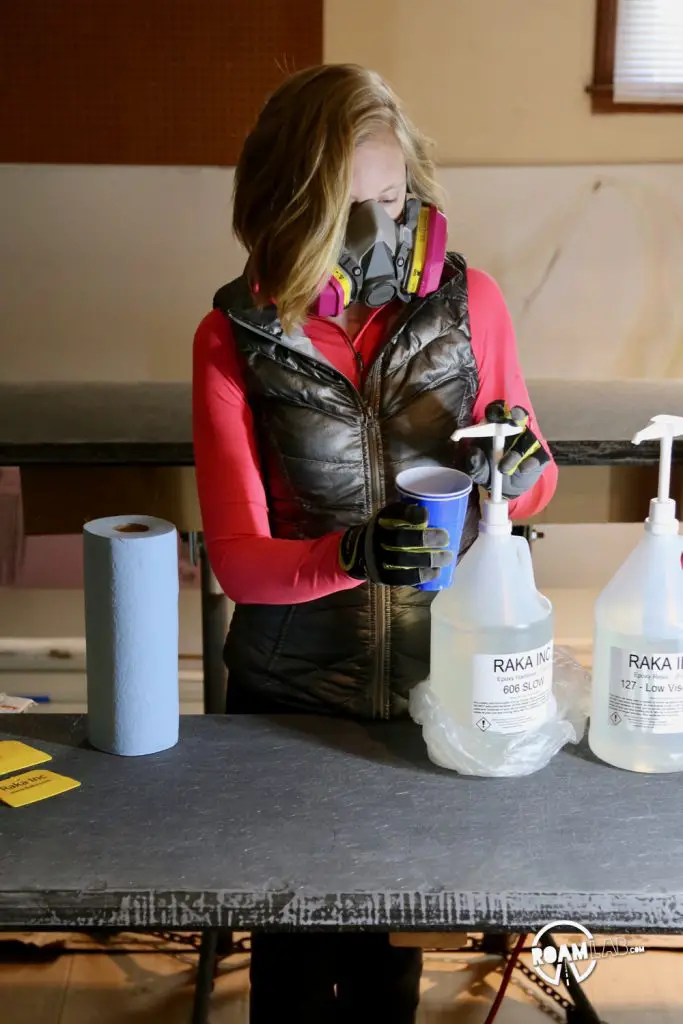
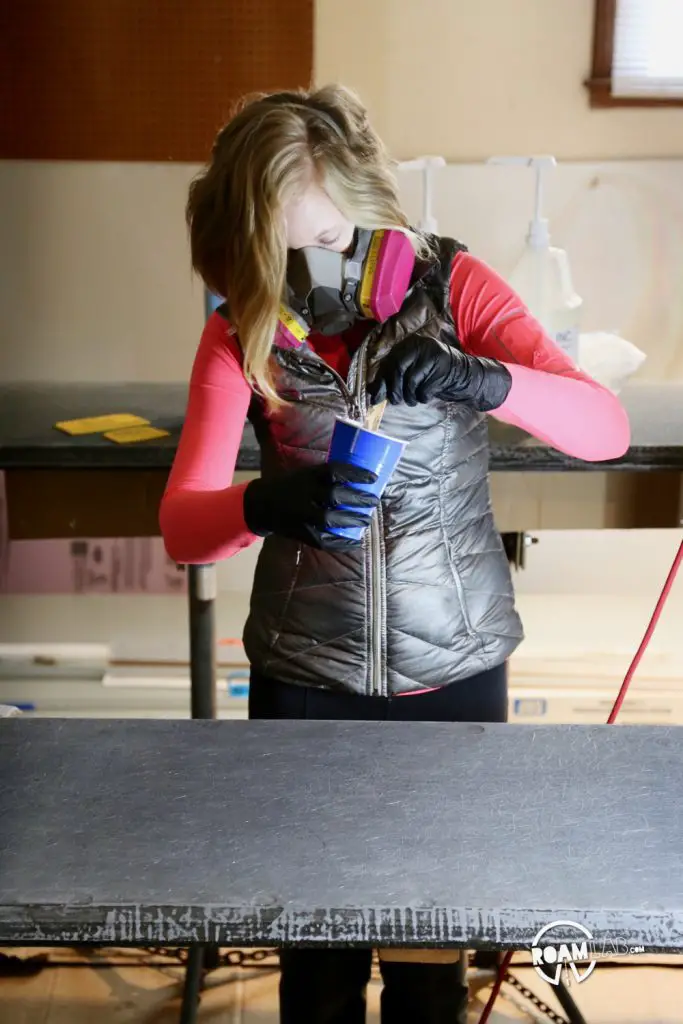
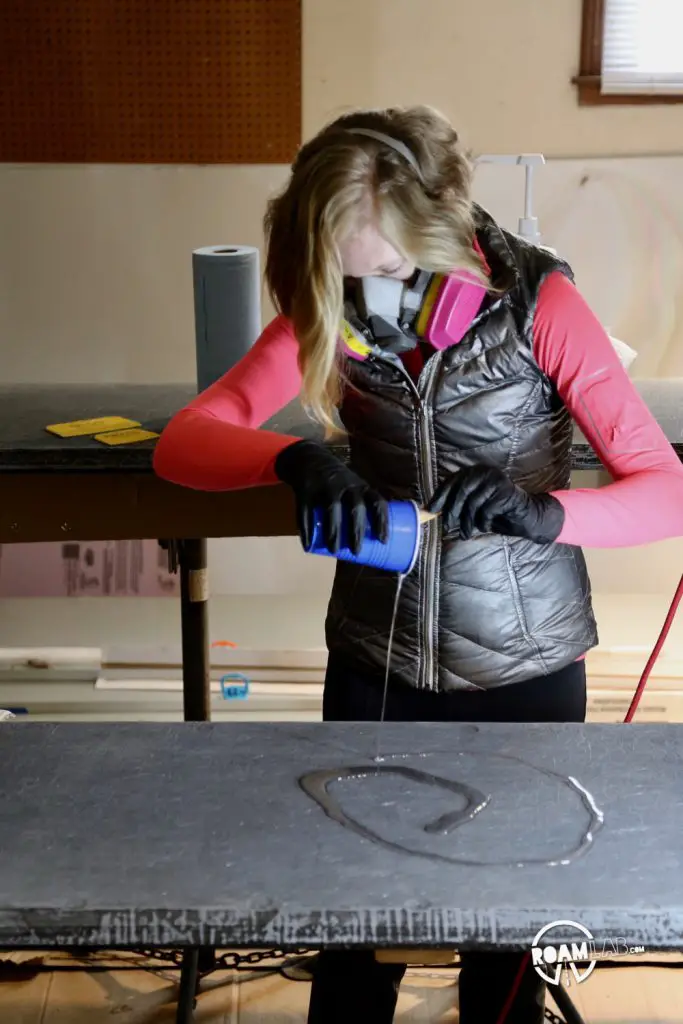
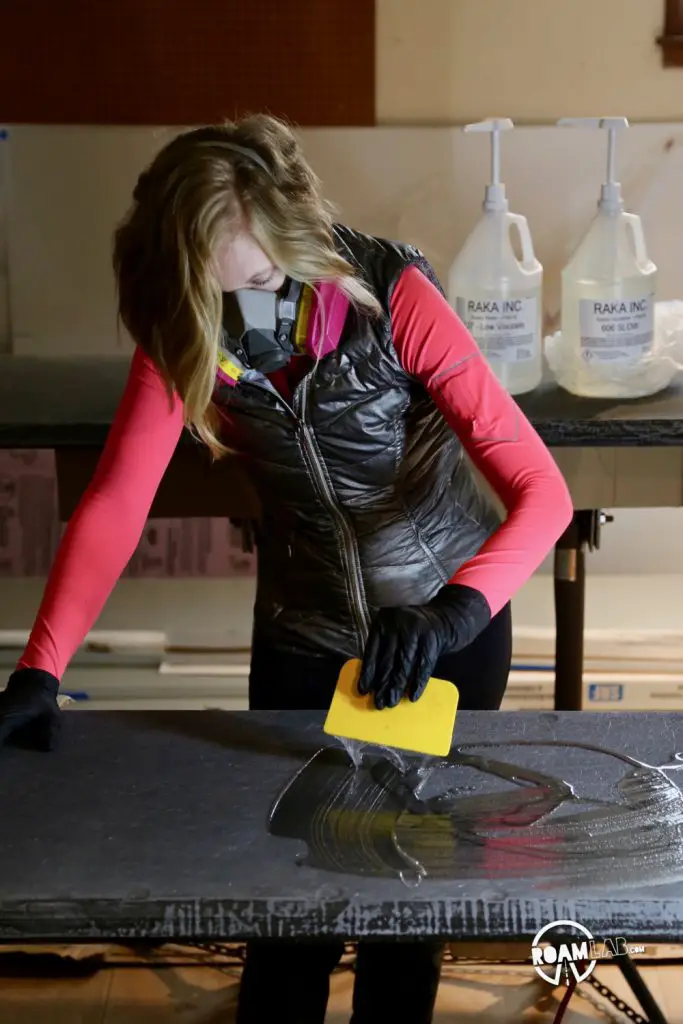
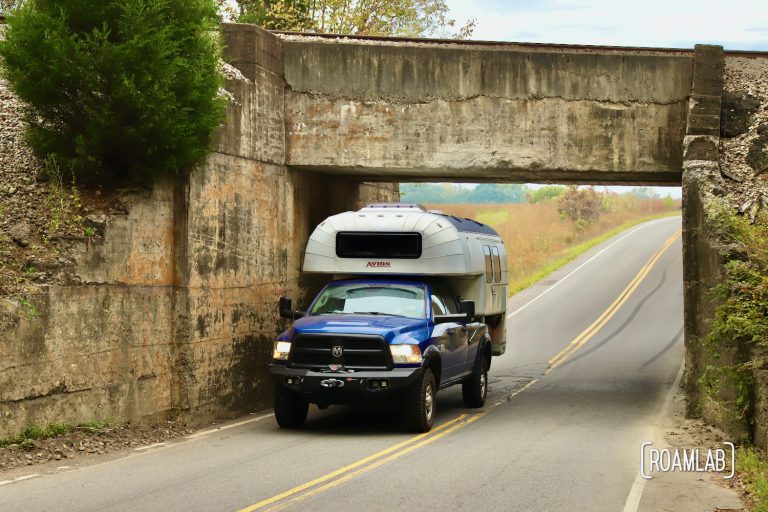
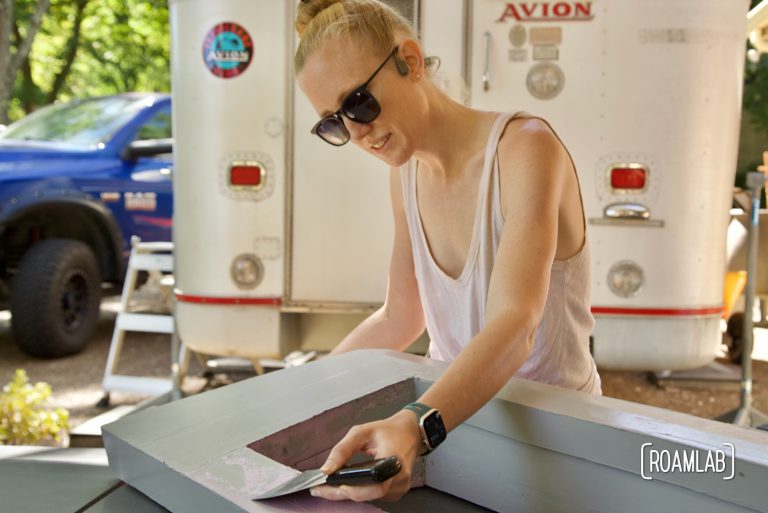
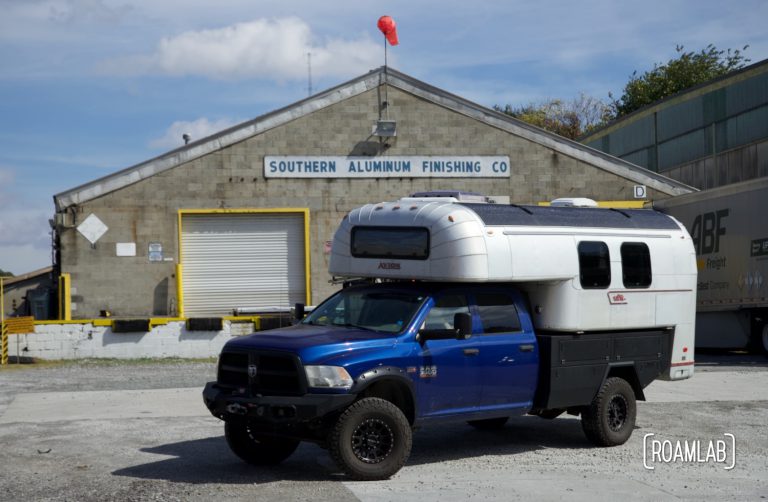
I love epoxy resin, but they have a downside. Epoxy resin typically doesn’t handle heat as well as the polyester and vinylester resin. Car bodies painted in dark colors can lose ridgidity on a hot summer day.
That is certainly true. In our case, we are using epoxy on the fiberglass composite which forms the bottom of the camper such as the subfloor and inner walls. While this can get hot, it’s not quite the temperature equivalent to your example of a dark painted vehicle on a summer day.